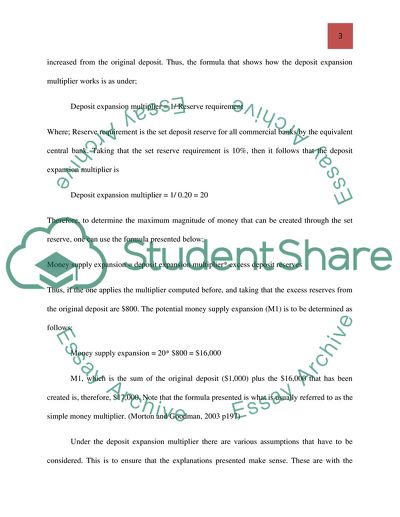Cite this document
(“Explain the mechanism of the money multiplier. How can the monetary Essay”, n.d.)
Explain the mechanism of the money multiplier. How can the monetary Essay. Retrieved from https://studentshare.org/finance-accounting/1586187-explain-the-mechanism-of-the-money-multiplier-how-can-the-monetary-authorities-influence-its-size-and-the-supply-of-money
Explain the mechanism of the money multiplier. How can the monetary Essay. Retrieved from https://studentshare.org/finance-accounting/1586187-explain-the-mechanism-of-the-money-multiplier-how-can-the-monetary-authorities-influence-its-size-and-the-supply-of-money
(Explain the Mechanism of the Money Multiplier. How Can the Monetary Essay)
Explain the Mechanism of the Money Multiplier. How Can the Monetary Essay. https://studentshare.org/finance-accounting/1586187-explain-the-mechanism-of-the-money-multiplier-how-can-the-monetary-authorities-influence-its-size-and-the-supply-of-money.
Explain the Mechanism of the Money Multiplier. How Can the Monetary Essay. https://studentshare.org/finance-accounting/1586187-explain-the-mechanism-of-the-money-multiplier-how-can-the-monetary-authorities-influence-its-size-and-the-supply-of-money.
“Explain the Mechanism of the Money Multiplier. How Can the Monetary Essay”, n.d. https://studentshare.org/finance-accounting/1586187-explain-the-mechanism-of-the-money-multiplier-how-can-the-monetary-authorities-influence-its-size-and-the-supply-of-money.


